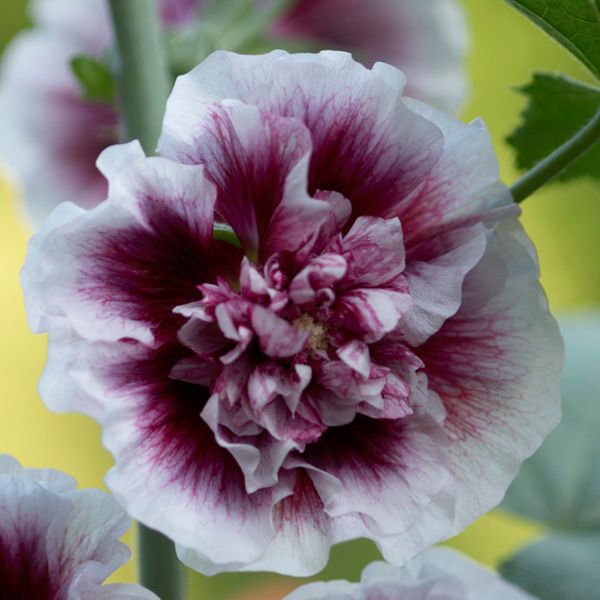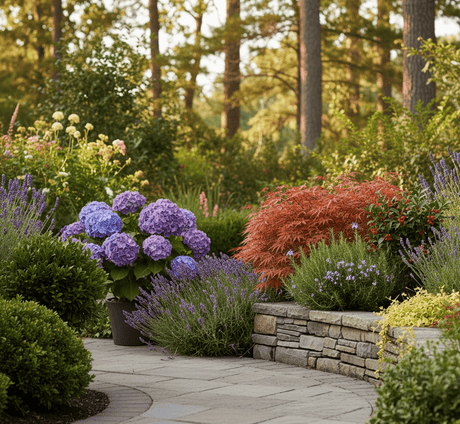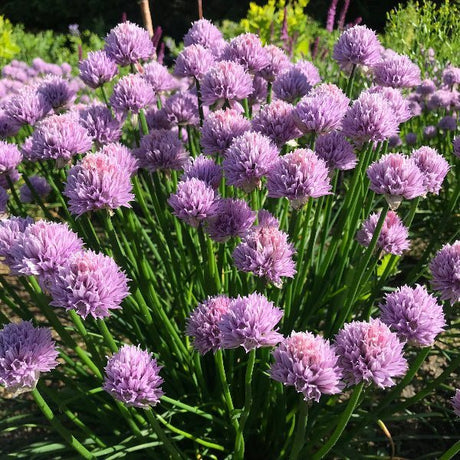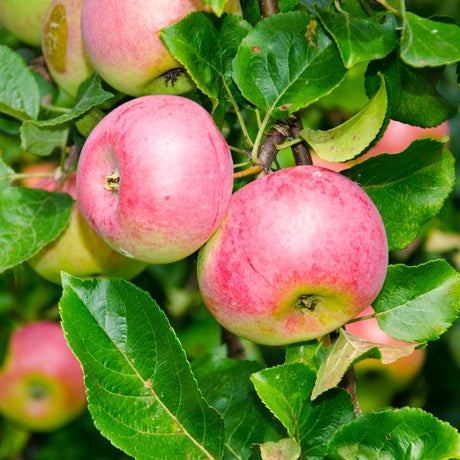Creme de Cassis Hollyhocks
Alcea 'Creme de Cassis'
- Stay Protected with Plant Sentry ™
Creme de Cassis Hollyhocks is backordered and will ship as soon as it is back in stock.
Plant Sentry™
Plant Sentry™

Plant Sentry™ Protected
Your order is protected by our compliance system that:
- Prevents restricted plants from shipping to your state
- Ensures plants meet your state's agricultural requirements
- Protects gardens from invasive pests and diseases
Delivery and Shipping
Delivery and Shipping
Delivery and Shipping
Fast, Safe Plant Delivery
Ships in 3-4 business days • Tracking provided • Weather protected
| Under $50 | $9.99 |
| $50 - $99.99 | $14.99 |
| $100 - $149.99 | $16.99 |
| $150 - $198.99 | $24.99 |
| $199+ | FREE |
✓ Zone-specific timing • ✓ Professional packaging • ✓ Health guarantee
Understanding Plant Options
Nature Hills offers plants in two main formats:
- Container Plants: Grown in pots with soil, sized by container volume and plant age
- Bare Root Plants: Dormant plants without soil, sized by height measurements
Container Plant Sizes
Container sizes indicate plant age and growing capacity rather than liquid volume equivalents. Our containers follow industry-standard nursery "trade gallon" specifications, which differ from standard liquid gallon measurements.
Young Plants (6 months to 18 months old)
| Container Size | Actual Volume | Metric Equivalent |
|---|---|---|
| 2" x 2" x 3" | 0.18 - 0.21 dry quarts | 0.20 - 0.23 dry liters |
| 4" Container | 0.31 - 0.87 dry quarts | 0.35 - 0.96 dry liters |
| 4.5" Container | 0.65 dry quarts | 0.72 dry liters |
| 6" Container | 1.4 dry quarts | 1.59 dry liters |
| 1 Quart | 1 dry quart | 1.1 dry liters |
| 5.5" Container | 1.89 dry quarts | 2.08 dry liters |
Established Plants (18 months to 2.5 years old)
| Container Size | Actual Volume | Metric Equivalent |
|---|---|---|
| 2 Quart | 2 dry quarts | 2.2 dry liters |
| #1 Container | 2.26 - 3.73 dry quarts | 2.49 - 4.11 dry liters |
| 5" x 5" x 12" | 3.5 - 4.3 dry quarts | 3.85 - 4.74 dry liters |
Mature Plants (2-4 years old)
| Container Size | Actual Volume | Metric Equivalent |
|---|---|---|
| #2 Container | 1.19 - 1.76 dry gallons | 5.24 - 7.75 dry liters |
| #3 Container | 2.15 - 2.76 dry gallons | 8.14 - 12.16 dry liters |
Large Plants (3-5 years old)
| Container Size | Actual Volume | Metric Equivalent |
|---|---|---|
| #5 Container | 2.92 - 4.62 dry gallons | 12.86 - 20.35 dry liters |
| #6 Container | 5.25 - 6.01 dry gallons | 23.12 - 26.42 dry liters |
| #7 Container | 5.98 - 6.53 dry gallons | 26.34 - 28.76 dry liters |
Bare Root Plants
Bare root plants are sold by height from the root system to the top of the plant. Plants may exceed minimum height requirements.
Common Sizes:
- Trees: 1 foot, 2 feet, 3 feet, 4 feet, 5 feet, 6 feet
- Shrubs & Perennials: 1 foot, 18 inches, 2 feet
Important Notes
Container Volume Specifications
- Trade Gallon Standard: Our containers follow industry-standard "trade gallon" specifications established by the American National Standards Institute (ANSI Z60.1) for nursery stock
- Volume Variations: Actual soil volume may vary due to plant root systems and growing medium settlement
- Age Indicators: Container size primarily indicates plant age and maturity rather than liquid volume equivalents
Growing Conditions
- Plant size can vary based on variety and growing conditions
- Container size helps indicate plant maturity and establishment level
- Larger containers generally mean more established root systems and faster landscape establishment
Seasonal Availability
- Bare root plants are available seasonally when dormant
- Container plants are available throughout the growing season
- Specific varieties may have limited availability in certain sizes
Questions?
For questions about specific plant sizes or availability, please contact our plant experts who can help you choose the right size for your landscape needs.
Plant Highlights
Creme de Cassis Hollyhocks highlights at a glance!
-
Botanical Name
-
Brand
-
Growing Zones3, 4, 5, 6, 7, 8
-
Growth RateFast
-
Mature Height
-
Leaf Color
-
Flower Color
-
Pollinator FriendlyYes
-
Bloom PeriodEarly Summer, Late Summer
Characteristics
Where To Plant
When To Prune
- Early Summer
Water & Moisture Needs
- Moderate
Sunlight Needs
Soil Needs
- Well Drained Soil

Growing Zones
Gorgeous bi-color blooms in bold deep raspberry-plum that fades to near white at the petal edges, the Crème De Cassis Hollyhock (Alcea 'Creme de Cassis') bleeds dark to light into feathery ombre hues! The long-lasting blooms show off in grand scale on 4-8-foot-tall stems that bloom from the bottom up!
The big textured leaves and sturdy stems create a tall show in the landscape and Crème De Cassis does it in with a flourish! Pollinators and hummingbirds adore these big satellite blooms that show off all summer! With some mindful deadheading, you'll enjoy a rebloom until fall!
Hollyhocks are biennial plants and appear as big leafy rosettes their first year, but then shoot up a tall flowering stalk their second year and form 'pups' or daughter plants at the base to bloom next year. Eventually forming large clumps that can be divided and replanted each spring throughout USDA growing zones 2 to 8.
Planting and Application:
Hollyhocks are supreme back-of-the-border specimens and look great at the corners of your home, anchoring your garden beds, and standing as tall pillars in Cottage gardens and Pollinator borders. Snip a few stems for bouquets or leave these tall focal points for your hummingbirds and butterflies!
Crème De Cassis Hollyhocks' deep color and height are sure to turn heads! Hardy plants throughout USDA growing zones 2 to 8, any sun garden seems enhanced with the addition of these vivid flowering garden standards!
- Ombre Raspberry/Plum to White Blooms
- Tall Flowering Stems With Multiple Buds Each
- Pollinator & Hummingbird Favorites
- Summer Blooms & Reblooms Til Fall
- Back of the Border Specimens, Garden Anchors & Focal Points
#ProPlantTips for Care:
Hollyhocks are best planted in full sun in a well-drained area, plus need moderate regular moisture during the worst of the heat and summer sun. Deadhead as soon as the flowers fade and remove seedpods to clean up the tall stems if you wish. In the event of strong winds and storms, you can stake these tall flowering stems to protect them. Each fall you can remove the leaves and stems, trimming down to a couple inches above the ground and mulching the crowns for the winter.
- Full Sun
- Well-Drained Soil
- Moderate Regular Moisture
- Deadhead For Rebloom & Prune Back Each Fall
- Very Tall Biennial Plant
Gorgeous plum and white, the Crème De Cassis Hollyhock is sure to show up and show off in your garden this year! Order quality biennials and bareroot landscaping plants from Nature Hills today!








